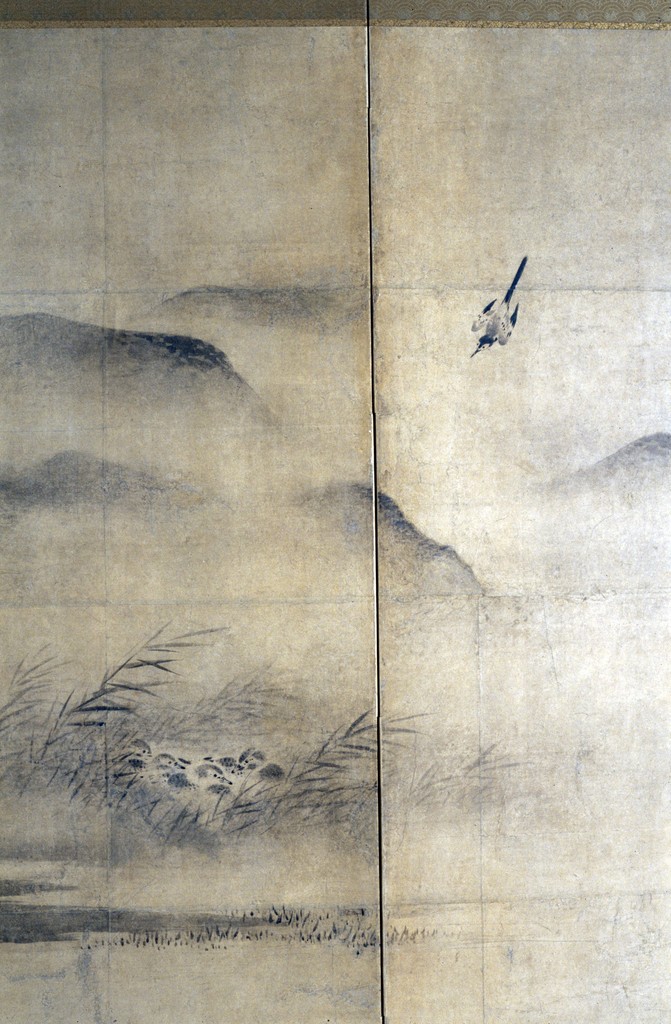Chapter 5: The Spiritual Sublime
To Christ our Lord
I caught this morning morning’s minion, king-
dom of daylight’s dauphin, dapple-dawn-drawn Falcon, in his riding
Of the rolling level underneath him steady air, and striding
High there, how he rung upon the rein of a wimpling wing
In his ecstasy! then off, off forth on swing,
As a skate’s heel sweeps smooth on a bow-bend: the hurl and gliding
Rebuffed the big wind. My heart in hiding
Stirred for a bird, – the achieve of, the mastery of the thing!
Brute beauty and valor and act, oh, air, pride, plume, here
Buckle! AND the fire that breaks from thee then, a billion
Times told lovelier, more dangerous, O my chevalier!
No wonder of it: shéer plód makes plough down sillion
Shine, and blue-bleak embers, ah my dear,
Fall, gall themselves, and gash gold-vermilion.
My heart in hiding/Stirred for a bird. Hopkins’ “The Windhover” is not easy reading, is it? We’ll come back to it. But those 8 words—we can all relate to them, right? A walk in the woods and the stirring eruption of a bird in flight, rising, mastering the air, lifting our spirits.
 |
| Kano School. (16th C.). Birds on a Marshy Stream. Bird in Flight. Ink, color on paper. |
Our spirits are similarly lifted by the bird in flight in the screen painting. Birds on a Marshy Stream combines the elevated spaces of Chinese landscape painting with “landscapes, birds, and figure pieces, chiefly in ink with occasional touches of pale tints” (Kano, family or school of Japanese painters). This school of art[1] reflects the influence of Zen Buddhism (Japanese Art and Architecture). We find spiritual inspiration everywhere in art … if we look.
[1] Kano school: named for Kano Masanobu (c.1434–c.1530) and his sons of the Muromachi period of Japanese history.
Art all over the world asks universal human questions: Where do I come from? Why am I here? What is this yearning inside me that doesn’t seem to be satisfied by anything concrete? How do I connect with the forces that made me? What happens when I die?
Spiritual Dimensions of Art: a class definition
- Evocation of a mysterious human inwardness …
- Yearning to transcend life & death …
- And connect with forces of creation
References
Artist of the Kano School. (Late 16th century). Birds on a Marshy Stream [Painting]. New Orleans, LA: New Orleans Museum of Art, (Gift of Mr. and Mrs. Frederick Stafford, 71.53). ARTstor https://library-artstor-org.ezproxy.bethel.edu/asset/AAPDIG_10311725454.
Hopkins, G. M. (May 30, 1877). “The Windhover.” https://www.poetryfoundation.org/poems/44402/the-windhover.
Japanese art and architecture [Article]. (2004). In Philip’s World Encyclopedia.
https://www.oxfordreference.com/view/10.1093/acref/9780199546091.001.0001/acref-9780199546091-e-5975.
Kano, family or school of Japanese painters [Article]. (2018). In P. Lagasse (Ed.) The Columbia encyclopedia (8th ed.). New York, NY: Columbia University Press. http://ezproxy.bethel.edu/login?url=https://search.credoreference.com/content/entry/columency/kano_family_or_school_of_japanese_painters/0?institutionId=712